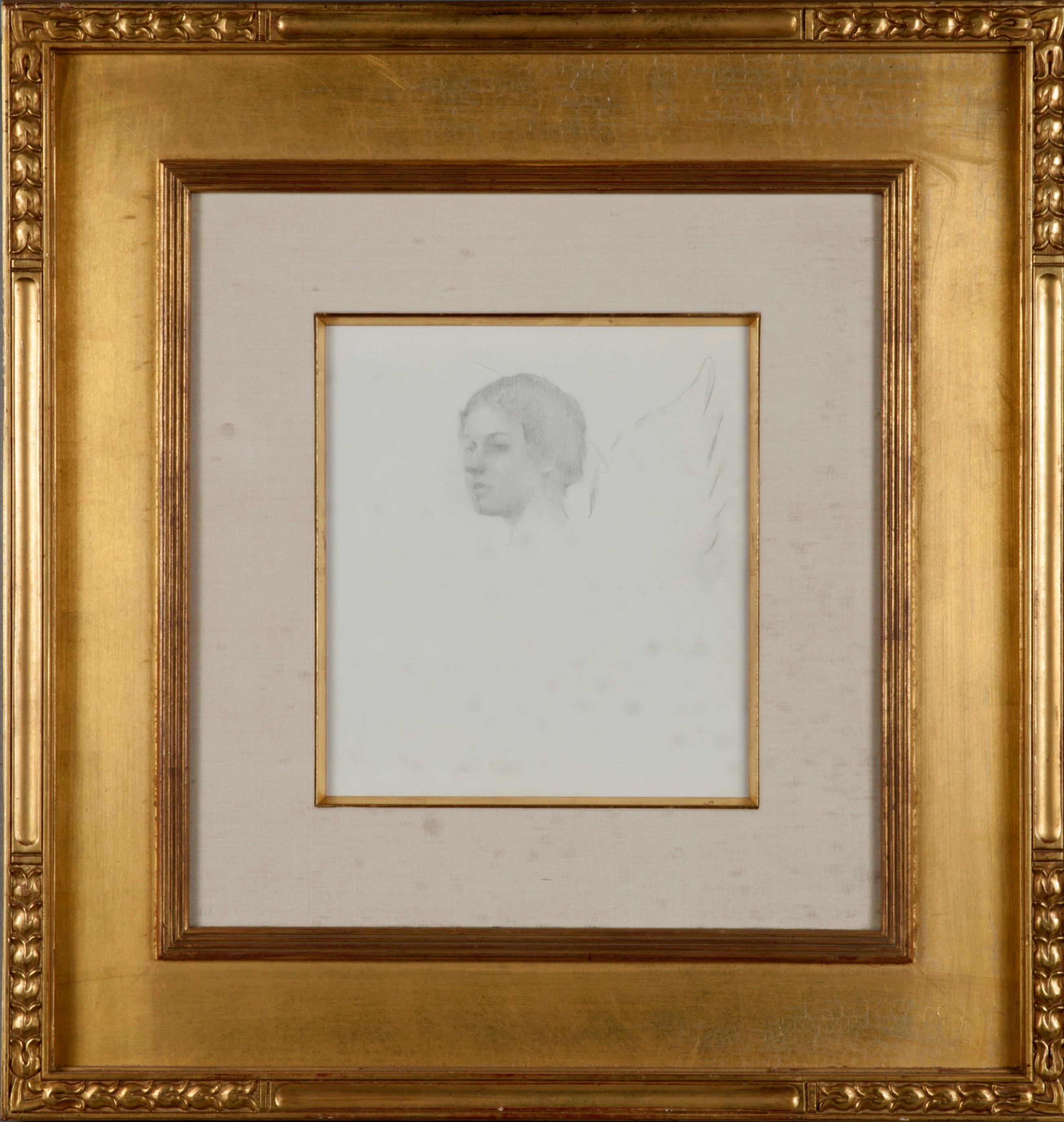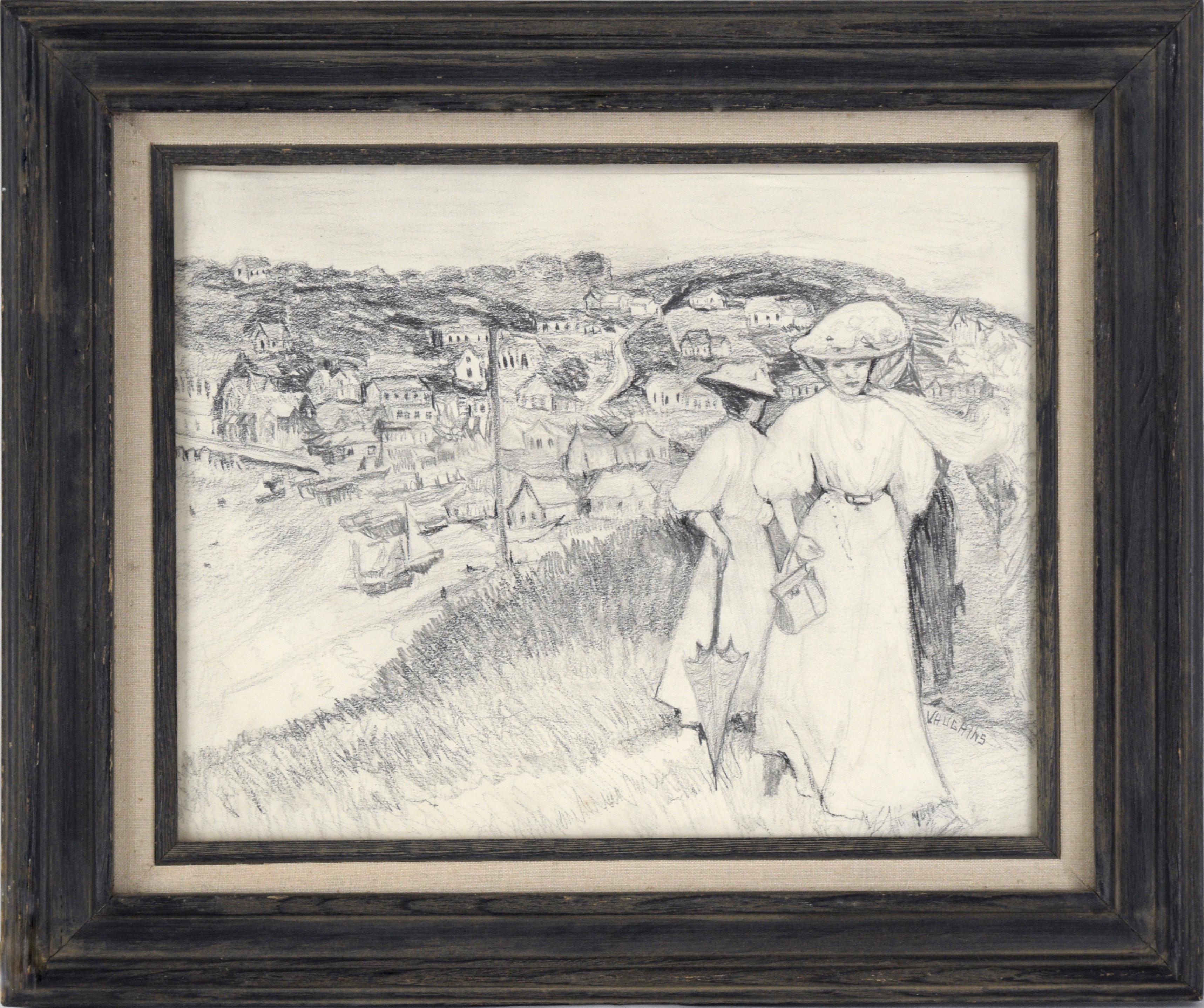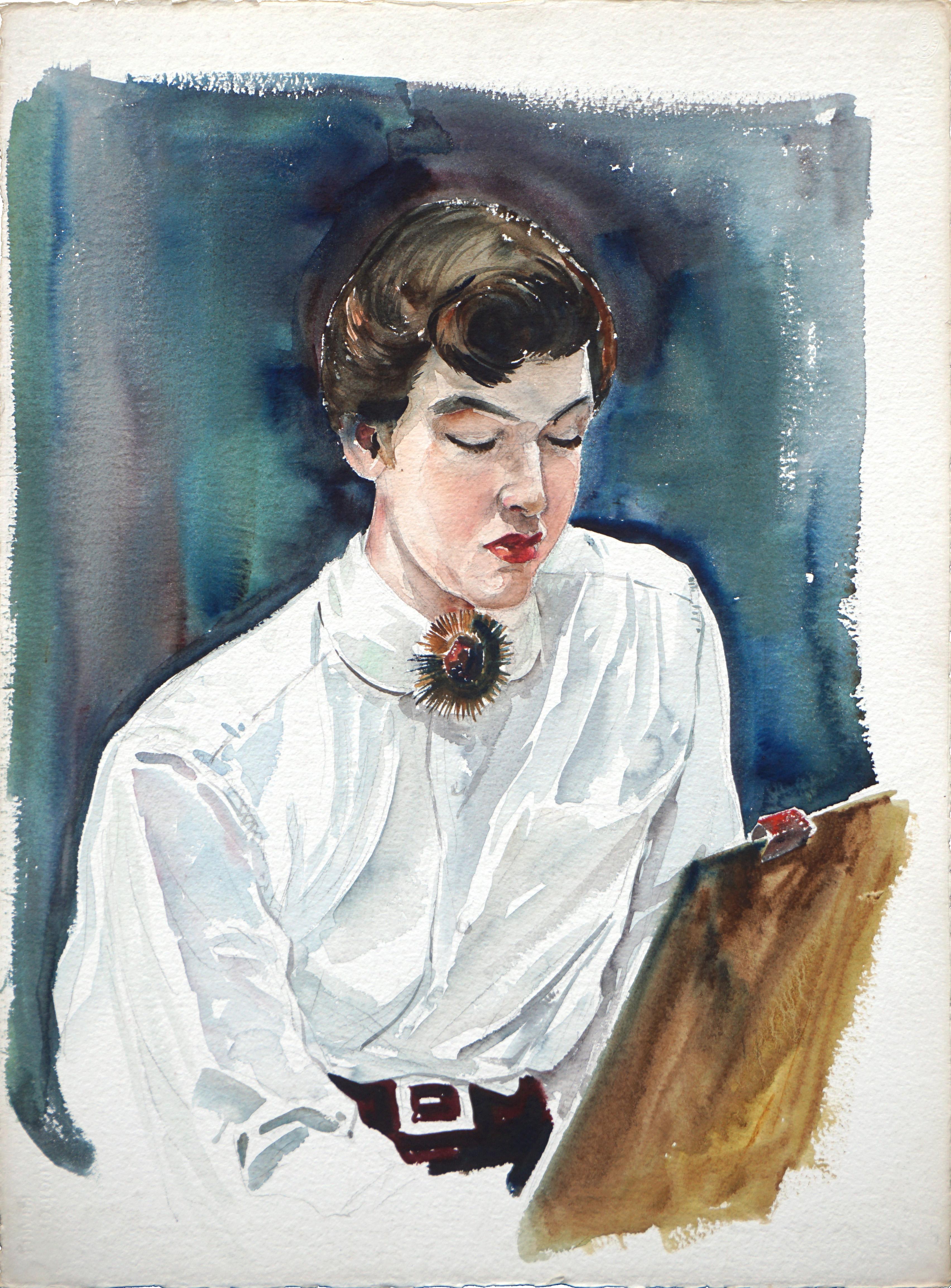Camille PissarroÉtudes d'après nature by Camille Pissarro - Work on paper
About the Item
- Creator:Camille Pissarro (1831-1903, French)
- Dimensions:Height: 8.67 in (22 cm)Width: 11.66 in (29.6 cm)
- Medium:
- Movement & Style:
- Period:
- Condition:
- Gallery Location:London, GB
- Reference Number:1stDibs: LU261212725072
Camille Pissarro
Camille Pissarro was one of the most influential members of the French Impressionist movement and the only artist to participate in all eight Impressionist exhibitions.
Born in July of 1830 on the island of Saint Thomas in the Danish West Indies, Camille was the son of Frédéric and Rachel Pissarro. At the age of 12, he went to school in Paris, where he displayed a penchant for drawing. He returned again to Paris in 1855, having convinced his parents to allow him to pursue a career as an artist rather than work in the family import/export business. Camille studied at the Académie Suisse alongside Claude Monet, and, during this time, he met Paul Cézanne, Édouard Manet and Pierre-Auguste Renoir.
In 1869, Camille settled in Louveciennes. The outbreak of the Franco-Prussian War in 1870 prompted him to move to England, and, with Monet, Camille painted a series of landscapes around Norwood and Crystal Palace, while studying English landscape painting in the museums. Upon returning a year later at the end of the War to Louveciennes, Camille discovered that only 40 of his 1,500 paintings — almost 20 years’ work — remained undamaged.
Camille settled in Pontoise in the summer of 1871, remaining there and gathering a close circle of friends around him for the next 10 years. He reestablished relationships with Cézanne, Manet, Monet, Renoir and Edgar Degas, expressing his desire to create an alternative to the Salon, so that their group could display their own unique styles. Camille married Julie Vellay, with whom he would have seven children. Cézanne repeatedly came to stay with them, and, under Camille’s influence, he learned to study nature more patiently, even copying one of Camille’s landscapes in order to learn his teacher’s technique.
The first Impressionist group exhibition, initiated by Monet in 1874, earned the Impressionists much criticism for their art. While mainly interested in landscape, Camille introduced people — generally, peasants going about their rural occupations — and animals into his works, and they often became the focal point of the composition. It was this unsentimental and realistic approach, with the complete absence of any pretense, which seemed to stop his work from finding appreciation in the general public.
One of the few collectors who did show interest in Camille’s work was a bank employee named Paul Gauguin, who, after acquiring a small collection of Impressionist works, turned to Camille for advice on becoming a painter himself. For several years, Gauguin closely followed his mentor, and, although their friendship was fraught with disagreement and misunderstandings, Gauguin still wrote shortly before Camille’s death in 1906: “He was one of my masters, and I do not deny him.”
In the 1880s, Camille moved from Pontoise to nearby Osny, before Eragny, a small village much further from Paris. At a time when he was dissatisfied with his work, in 1885, Camille met both Paul Signac and Georges Seurat. He was fascinated by their efforts to replace the intuitive perceptive approach of the Impressionists with a “Divisionist” method, or scientific study of nature’s phenomena based on optical laws. Despite having reached his mid-50s, Camille did not hesitate to follow the two young innovators. The following year, he passed on this new concept to Vincent Van Gogh, who had just arrived in Paris and was keen to learn of the most recent developments in art. However, after a few years, Camille felt restricted by Seurat’s theories and returned to his more spontaneous technique while retaining the lightness and purity of color acquired during his Divisionist phase.
In the last years of his life, Camille divided his time between Paris, Rouen, Le Havre and Eragny, painting several series of different aspects of these cities, with varying light and weather effects. Many of these paintings are considered among his best and make for an apt finale to his long and prodigious career.
When Camille Pissarro died in the autumn of 1903, he had finally started to gain public recognition. Today his work can be found in many of the most important museums and collections throughout the world.
Find original Camille Pissarro art on 1stDibs.
(Biography provided by Stern Pissarro Gallery)
- ShippingRetrieving quote...Ships From: London, United Kingdom
- Return PolicyA return for this item may be initiated within 7 days of delivery.
- Le Ramassage des Foins by Paulémile Pissarro - Graphite drawingBy Paul Emile PissarroLocated in London, GB*UK BUYERS WILL PAY AN ADDITIONAL 20% VAT ON TOP OF THE ABOVE PRICE Le Ramassage des Foins by Paulémile Pissarro (1884-1972) Graphite on paper 12.9 x 20 cm (5 ¹/₈ x 7 ⁷/₈ inches) Si...Category
Mid-20th Century Impressionist Figurative Drawings and Watercolors
MaterialsGraphite, Paper
- La Maison, Normandie by Paulémile Pissarro - Drawing of a countryside houseBy Paul Emile PissarroLocated in London, GBLa Maison, Normandie by Paulémile Pissarro (1884-1972) Pencil on paper 24 x 32 cm (9 ¹/₂ x 12 ⁵/₈ inches) Signed lower left, Paulémile- Pissarro This work is accompanied by a certif...Category
1940s Impressionist Figurative Drawings and Watercolors
MaterialsPencil, Paper
- La Seine à Paris by Georges Manzana Pissarro - Work on Paper, Paris sceneBy Georges Henri Manzana PissarroLocated in London, GB*UK BUYERS WILL PAY AN ADDITIONAL 20% VAT ON TOP OF THE ABOVE PRICE La Seine à Paris by Georges Manzana Pissarro (1871-1961) Pencil on paper 22.5 x 28.3 cm (8 ⁷/₈ x 11 ¹/₈ inches) S...Category
1930s Impressionist Figurative Drawings and Watercolors
MaterialsPaper, Pencil
- Cantepie, Normandy by Paulémile Pissarro - DrawingBy Paul Emile PissarroLocated in London, GBCantepie, Normandy by Paulémile Pissarro (1884-1972) Pencil on paper 21 x 27 cm (8 ¹/₄ x 10 ⁵/₈ inches) Signed lower right, Paulémile- Pissarro. This work is accompanied by a certif...Category
20th Century Impressionist Figurative Drawings and Watercolors
MaterialsPaper, Pencil
- Cavaliers by Henri de Toulouse-Lautrec - Figurative work on paperBy Henri de Toulouse-LautrecLocated in London, GBCavaliers by Henri de Toulouse-Lautrec (1864-1901) Pencil on paper 15.7 x 25.4 cm (6 ¹/₈ x 10 inches) Inscribed with intials lower right, TL This work on paper is characteristic of ...Category
19th Century Impressionist Figurative Drawings and Watercolors
MaterialsPaper, Pencil
- Regent's Park, London by Camille Pissarro - Watercolour on paperBy Camille PissarroLocated in London, GBRegent's Park, London by Camille Pissarro (1830-1903) Watercolour on paper 16.5 x 24.5 cm (6 ¹/₂ x 9 ⁵/₈ inches) Inscribed, signed and dated lower left, C.Pissarro 1890 Camille Piss...Category
1890s Impressionist Figurative Drawings and Watercolors
MaterialsPaper, Watercolor
- [Woman at a Table]Located in Boston, MAFrederick Bosley was an Impressionist painter of the Boston School who most often depicted portraits, figures and still-lifes. The artist was born in Lebanon, New Hampshire in 1881. He studied at the Museum School in Boston from 1900-1906 with Edmund C. Tarbell (1862-1938) and Frank W. Benson (1862-1951), and then in Europe from 1906-1908. Bosley returned to Boston in 1909, obtaining a studio at the Fenway Studios from 1909-1918. He was to become a teacher in his own right, settling as Director at the Museum School from 1913-1931. His many awards include First prize in the 1920 Concord Art Academy Exhibition and a Gold Medal in the Pennsylvania Academy of Fine Arts Exhibition, 1925. His work may be found in the collections of several institutions, including the Boston Museum of Fine Arts, the Farnsworth Museum, the National Academy of Design and the Concord Academy...Category
Early 20th Century American Impressionist Figurative Drawings and Waterc...
MaterialsPencil, Paper
- AngelLocated in Boston, MAFrom the estate of the artist. Frederick Bosley was an Impressionist painter of the Boston School who most often depicted portraits, figures and still-lifes. The artist was born in Lebanon, New Hampshire in 1881. He studied at the Museum School in Boston from 1900-1906 with Edmund C. Tarbell (1862-1938) and Frank W. Benson (1862-1951), and then in Europe from 1906-1908. Bosley returned to Boston in 1909, obtaining a studio at the Fenway Studios from 1909-1918. He was to become a teacher in his own right, settling as Director at the Museum School from 1913-1931. His many awards include First prize in the 1920 Concord Art Academy Exhibition and a Gold Medal in the Pennsylvania Academy of Fine Arts Exhibition, 1925. His work may be found in the collections of several institutions, including the Boston Museum of Fine Arts, the Farnsworth Museum, the National Academy of Design and the Concord Academy...Category
Early 20th Century American Impressionist Figurative Drawings and Waterc...
MaterialsPaper, Pencil
- "Yesterday's Ladies" Figurative DrawingBy Virginia J HughinsLocated in Soquel, CACharming "Yesterday's Ladies" drawing by Aptos, California artist Virginia J Hughins,(Virginia Brubaker DeWolf), (American, 1923-2004). Presented in a rustic black wood frame. Signed...Category
1990s American Impressionist Figurative Drawings and Watercolors
MaterialsPaper, Carbon Pencil
- The Royal Palace, Monte Carlo, Monaco.By Hercules Brabazon BrabazonLocated in Cotignac, FRMid 19th century pastel drawing view of the Royal Palace, Monte Carlo, Monaco by British artist Hercules Brabazon Brabazon. The work is titl...Category
Mid-19th Century Impressionist Landscape Drawings and Watercolors
MaterialsPaper, Pastel, Pencil
- "The Pyramid of Marriage" Drawing 20" x 14" inch by Omar Abdel ZaherLocated in Culver City, CA"The Pyramid of Marriage" Drawing 20" x 14" inch by Omar Abdel Zaher Abdel Zaher is a graduate of the Academy of Fine Arts in Helwan and has been painting for three decades and has ...Category
20th Century Impressionist Figurative Drawings and Watercolors
MaterialsPaper, Pencil
- Portrait of an Art Student with Brooch, Mid Century Figurative WatercolorBy Joseph YeagerLocated in Soquel, CAElegant portrait of an art student at work by Joseph Yeager (American, 20th Century). This piece is unsigned, but was acquired with a collection of Yeager work directly from the estate. This piece is on heavy bond paper with ragged edges. No frame. Joseph "Joe" Yeager (American, 20th Century) was raised in Cleveland Ohio, where he went to art school at night and started his art career at 19. He was a commercial artist for the Cleveland Press...Category
1960s American Impressionist Portrait Drawings and Watercolors
MaterialsPaper, Watercolor, Pencil
![[Woman at a Table]](https://a.1stdibscdn.com/a_3973/a_139116321707237315466/CGL54384_40jpg_framed_master.jpg)





